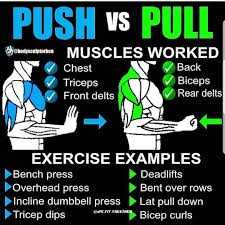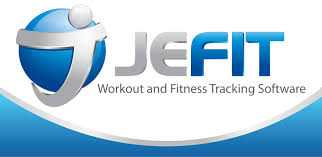Scheduling, Planning and Tracking Workouts for the Busy
Planning and scheduling workouts when work and life already feel full can be a stressful task. In the long run you know it's good for you, but in the short run, you keep telling yourself you don't have enough time. Well, this is for people who feel like they don't have the time, but are willing to make it work. I use a number of strategies to help structure my workouts, so I spent less time deliberating on whether or not I should go to the gym and more time working out. Most of my workouts are strength training oriented, but most of the organizing around workouts should apply to you if you do more cardio based workouts.
What do I workout?
If you don't know what to workout, the best bet is to do full body or compound workouts that utilize multiple muscles to help move weight. The most effective full-body workouts are:
- Squat
- Deadlift
- Overhead Press
- Bench Press
- Sit Ups
Scheduling Workouts
Workout Days
The two common scheduling types are Fixed Recurring Days and Dynamic Numbered Days. Fixed Recurring Days These are workouts that you schedule on set days, for example Monday, Wednesday, Saturday and do each week. Dynamic Numbered Days These are set workouts that are associated to a day number, for example Day 1, Day 2, Day 3 and those day numbers are usually ordered but are scheduled dynamically based on your schedule.
Push / Pull Workouts
Push: Exercises that train your upper or lower body muscles that involve pushing movements. This primarily includes Chest, Shoulders, Squats, and Triceps. Pull: Exercises that train your upper or lower body muscles that involve pulling movements. This primary includes Back and Biceps. [

Jefit
 Jefit is a gym workout app for Android and iOS. Jefit allows you to plan, and manage your workout routine, which includes workout order, rest time, and schedules. You also have access to a workout database to piece together your workouts and collect data on your progress over time. I use Dynamic Day scheduling for Jefit setting Day 1, Day 2 etc that have predefined workouts that change based on my schedule. Planning:
Jefit is a gym workout app for Android and iOS. Jefit allows you to plan, and manage your workout routine, which includes workout order, rest time, and schedules. You also have access to a workout database to piece together your workouts and collect data on your progress over time. I use Dynamic Day scheduling for Jefit setting Day 1, Day 2 etc that have predefined workouts that change based on my schedule. Planning:
- Decide if Push or Pull Day
- Select appropriate exercise
- Set Rest Time
- Set number of repetitions
- Set number of Sets
- Order workouts

Supplements
Whey Protein
"Whey protein is a mixture of proteins isolated from whey, which is the liquid part of milk that separates during cheese production. Milk actually contains two main types of protein: casein (80%) and whey (20%). Whey is found in the watery portion of milk. When cheese is produced, the fatty parts of the milk coagulate and the whey is separated from it as a byproduct."
The ways by which whey protein promotes muscle/strength gain include:
1. Building blocks: It provides protein and amino acids, which serve as building blocks for increased muscle growth.
2. Hormones: It increases the release of anabolic hormones that can stimulate muscle growth, such as insulin (12).
3. Leucine: It's high in the amino acid leucine, which is known to stimulate muscle protein synthesis at the molecular and genetic level (13, 14).
4. Fast absorption: Whey protein is absorbed and utilized very quickly compared to other types of protein (15).
Creatine
"Creatine monohydrate is a small peptide that is made up of amino acids (the “building blocks of protein”). It is formed in the liver, pancreas and kidneys, mostly with the help of the amino acids called glycine, arginine and methionine." "Taking creatine can be useful for boosting production of energy in the form of adenosine triphosphate (ATP). ATP is sometimes referred to as the “molecular currency” of the body, since it helps store and transport chemical energy within cells. ATP is needed for cellular functions and is the source of fuel for our muscles — especially when they are working hard, such as during exercise. (4) When we eat foods we acquire a mix of macronutrients (carbohydrates, fats and proteins) that are used to produce ATP, and creatine helps this process by donating a phosphate group that helps with ATP creation."
BCAAs "BCAAs are the essential amino acids leucine, isoleucine and valine, which comprise around 35% of your body's muscle protein. They're “essential” because your body doesn't make them on its own—you have to get them from food and workout supplements. Like other amino acids, they're the building blocks of protein. But these particular aminos may also help preserve muscle glycogen stores, which fuel your muscles and minimize protein breakdown during exercise. "
Summary
Scheduling Workouts Planning Workouts Tracking Workouts Managing Nutrition Rest and Research
#fitness #jefit